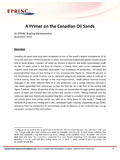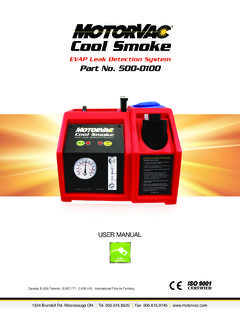Transcription of A PRIMER ON GASOLINE BLENDING - EPRINC
1 A PRIMER ON GASOLINE BLENDING . An EPRINC Briefing Memorandum June 2009. Refineries produce a more expensive fuel blend during the summer to cut down on smog during hot months. Stations nationwide will start selling a less-expensive winter fuel usually by mid September, which on average means that winter GASOLINE is less expensive than summer GASOLINE . GASOLINE is composed of many different hydrocarbons. Crude oil enters a refinery, and is processed through various units before being blended into GASOLINE . A refinery may have a fluid catalytic cracker (FCC), an alkylate unit, and a reformer, each of which produces GASOLINE BLENDING components. Alkylate GASOLINE , for example, is valuable because it has a very high octane, and can be used to produce high- octane (and higher value) blends.
2 Light straight run GASOLINE is the least processed stream. It is cheap to produce, but it has a low octane. The person specifying the GASOLINE blends has to mix all of the components together to meet the product specifications. There are two very important (although not the only) specifications that need to be met for each GASOLINE blend. The GASOLINE needs to have the proper octane, and it needs to have the proper Reid vapor pressure, or RVP. While the octane of a particular grade is constant throughout the year, the RVP. spec changes as cooler weather sets in. The RVP is the vapor pressure of the GASOLINE blend when the temperature is 100 degrees F. Normal atmospheric pressure varies, but is usually around lbs per square inch (psi). Atmospheric pressure is caused by the weight of the air over our heads.
3 If a liquid has a vapor pressure of greater than local atmospheric pressure, that liquid boils. For example, when you heat a pot of water, the vapor pressure increases until it reaches atmospheric pressure. At that point, the water begins to boil. In the summer, when temperatures can exceed 100 degrees F in many locations, it is important that the RVP of GASOLINE is well below Otherwise, it can pressure up your gas tanks and gas cans, and it can boil in open containers. Gas that is boiled off ends up in the atmosphere, and contributes to air pollution. Therefore, the EPA has declared that summer GASOLINE blends may not exceed psi in some locations, and psi in others. A typical summer GASOLINE blend might consist of 40% FCC gas, 25% straight run gas, 15% alkylate, 18%.
4 Reformate, and 2% butane. The RVP of the GASOLINE blend depends on how much of each component is in the blend, and what the RVP is of each component. Butane is a relatively inexpensive ingredient in GASOLINE , but it has the highest vapor pressure at around 52 psi. In a GASOLINE blend, each component contributes a fraction to the overall RVP. In the case of butane, if there is 10% butane in the blend, it will contribute around psi (10% of 52 psi) to the overall blend. (In Energy Policy Research Foundation, Inc. 1031 31st Street, NW Washington, DC 20007 1. reality, it is slightly more complicated than this, because some components interact with each other which can affect the expected RVP). This means that in the summer, the butane fraction must be very low in the GASOLINE , or the overall RVP of the blend will be too high.
5 That is the primary difference between winter and summer GASOLINE blends. Winter GASOLINE blends are phased in as the weather gets cooler. September 15th is the date of the first increase in RVP, and in some areas the allowed RVP eventually increases to 15 psi. This has two implications for GASOLINE prices every fall. First, as noted, butane is a cheaper BLENDING component than most of the other ingredients. That makes fall and winter GASOLINE cheaper to produce. But butane is also abundant, so that means that GASOLINE supplies effectively increase as the RVP requirement increases. These factors normally combine each year to reduce GASOLINE prices in the fall. The RVP is stepped back down to summer levels starting in the spring, and this usually causes prices to increase.
6 RBOB is the base GASOLINE mixture produced by refiners or blenders that is shipped to terminals, where ethanol is then added to create the finished ethanol-blended RFG. GASOLINE is more volatile than diesel oil, Jet-A or kerosene, not only because of the base constituents, but because of the additives that are put into it. The final control of volatility is often achieved by BLENDING with butane. The Reid Vapor Pressure (RVP) test is used to measure the volatility of GASOLINE . The desired volatility depends on the ambient temperature: in hotter climates, GASOLINE components of higher molecular weight and thus lower volatility are used. In cold climates, too little volatility results in cars failing to start. In hot climates, excessive volatility results in what is known as "vapor lock" where combustion fails to occur, because the liquid fuel has changed to a gaseous fuel in the fuel lines, rendering the fuel pump ineffective and starving the engine of fuel.
7 1 (This effect mainly applies to engine-mounted fuel pumps; a fuel pump located in the fuel tank, as in most modern automobiles, is much more resistant to vapor lock.). In the United States, volatility is regulated in large urban centers to reduce the emission of unburned hydrocarbons. In large cities, so-called reformulated GASOLINE that is less prone to evaporation, among other properties, is required. In Australia summer petrol volatility limits are set by State Governments and vary between capital cities. Most countries simply have a summer, winter and perhaps intermediate limit. Volatility standards may be relaxed (allowing more GASOLINE components into the atmosphere) during emergency anticipated GASOLINE shortages. For example, on 31 August 2005 in response to Hurricane Katrina, the United States permitted the sale of non-reformulated GASOLINE in some urban areas, which effectively permitted an early switch from summer to winter-grade GASOLINE .
8 As mandated by EPA. administrator Stephen L. Johnson, this "fuel waiver" was made effective through 15 September 2005. 1. This effect mainly applies to engine-mounted fuel pumps; a fuel pump located in the fuel tank, as in most modern automobiles, is much more resistant to vapor lock. Energy Policy Research Foundation, Inc. 1031 31st Street, NW Washington, DC 20007 2. Though relaxed volatility standards may increase the atmospheric concentration of volatile organic compounds in warm weather, higher volatility GASOLINE effectively increases a nation's GASOLINE supply because the amount of butane in the GASOLINE pool is allowed to increase. Besides lowering the volatility of the fuel, other means of controlling the emission of unburned hydrocarbons, for environmental concerns, exist and are exercised.
9 All vehicles sold in the United States (since at least the 1980s, probably the 1970s or earlier) are required to have a fuel evaporative control system (called an EVAP system in automotive jargon) which collects expanding fuel vapor from the fuel tank in a charcoal-lined canister while the engine is stopped and then releases the collected vapors (through a "purge valve") into the engine intake for burning when the engine is running (usually only after it has reached normal operating temperature.) The fuel evaporative control system is also required to include a special filling cap which seals the fueling inlet to prevent vapors from escaping directly from the tank through it. Modern vehicles with OBD-II emissions control systems will turn on the MIL.
10 (Malfunction Indicator Light, "check engine" light) if it is detected that the gas cap is missing or loose and so not sealing. (The general purpose of this light is to indicate when any of the emissions controls are not working properly.). Oxygenate BLENDING adds oxygen to the fuel in oxygen-bearing compounds such as MTBE, ETBE and ethanol, and so reduces the amount of carbon monoxide and unburned fuel in the exhaust gas, thus reducing smog. In many areas throughout the US oxygenate BLENDING is mandated by EPA regulations to reduce smog and other airborne pollutants. For example, in Southern California, fuel must contain 2%. oxygen by weight, resulting in a mixture of ethanol in GASOLINE . The resulting fuel is often known as reformulated GASOLINE (RFG) or oxygenated GASOLINE .





